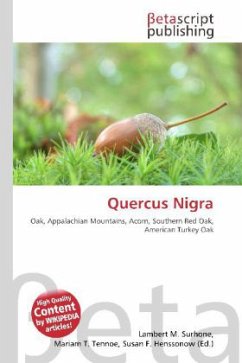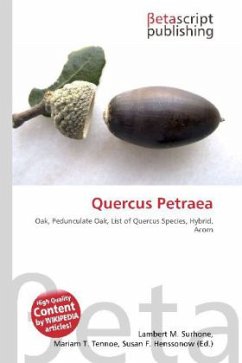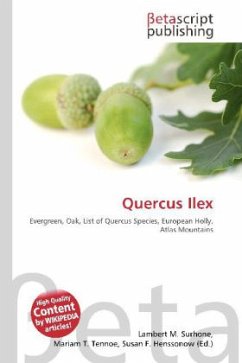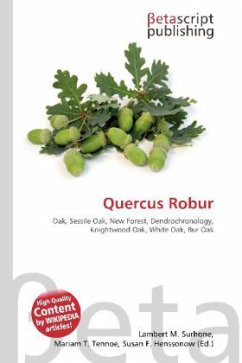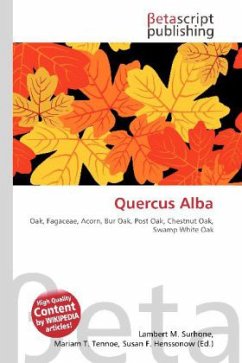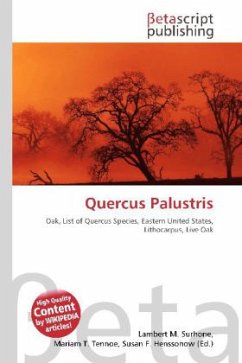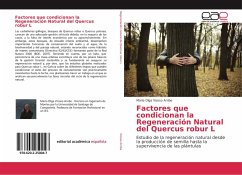
Quercus Suber
Versandkostenfrei!
Versandfertig in 6-10 Tagen
22,99 €
inkl. MwSt.

PAYBACK Punkte
11 °P sammeln!
Please note that the content of this book primarily consists of articles available from Wikipedia or other free sources online. Quercus suber, commonly called the Cork Oak, is a medium-sized, evergreen oak tree in the section Quercus sect. Cerris. It is the primary source of cork for wine bottle stoppers and other uses. It is native to southwest Europe and northwest Africa. It grows to up to 20 m, although it is typically more stunted in its native environment. The leaves are 4 to 7 cm long, weakly lobed or coarsely toothed, dark green above, paler beneath, with the leaf margins often downcurv...
Please note that the content of this book primarily consists of articles available from Wikipedia or other free sources online. Quercus suber, commonly called the Cork Oak, is a medium-sized, evergreen oak tree in the section Quercus sect. Cerris. It is the primary source of cork for wine bottle stoppers and other uses. It is native to southwest Europe and northwest Africa. It grows to up to 20 m, although it is typically more stunted in its native environment. The leaves are 4 to 7 cm long, weakly lobed or coarsely toothed, dark green above, paler beneath, with the leaf margins often downcurved. The acorns are 2 to 3 cm long, in a deep cup fringed with elongated scales. Natural stands of cork oak can support diverse ecosystems. For example, in parts of northwestern North Africa, some cork oak forests are habitat to the endangered primate Barbary Macaque, Macaca sylvanus, a species whose habitat is fragmented and whose range was prehistorically much wider. In Western Europe, namely in Portugal and Spain, the cork oak forests are home to endangered species such as the Iberian Lynx, the most critically threatened feline in the world.



